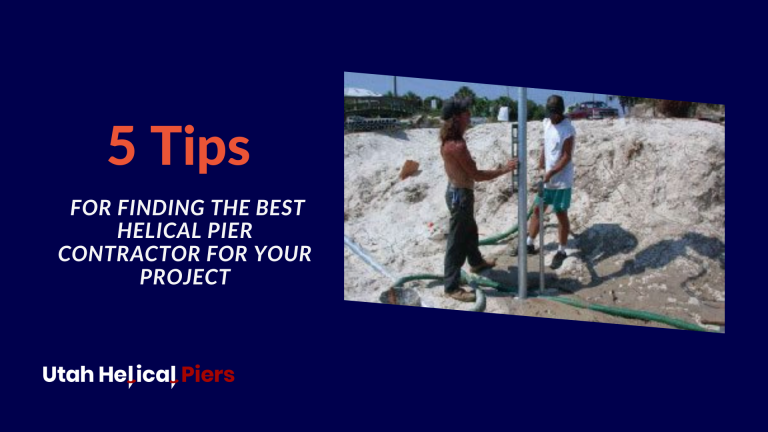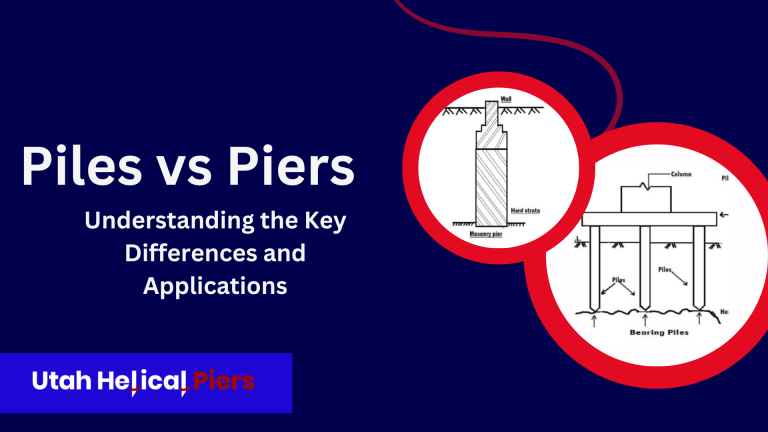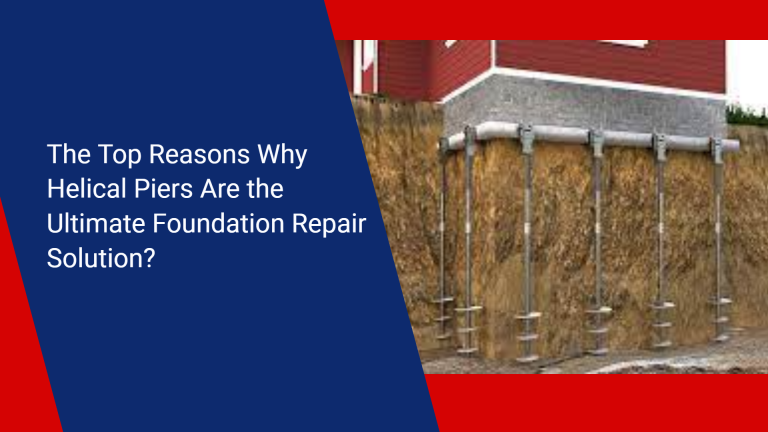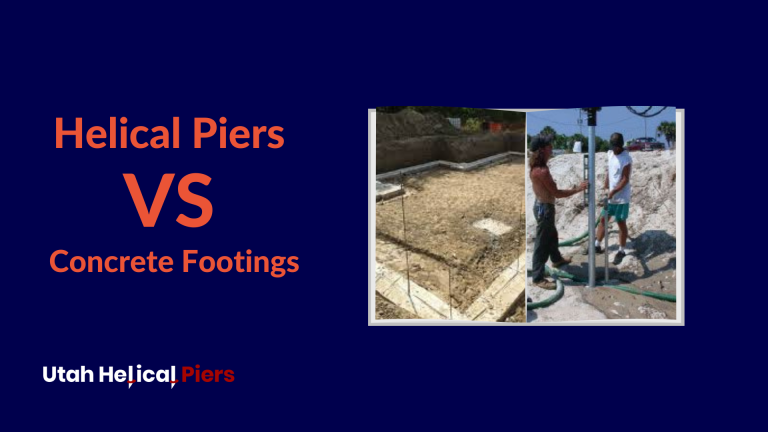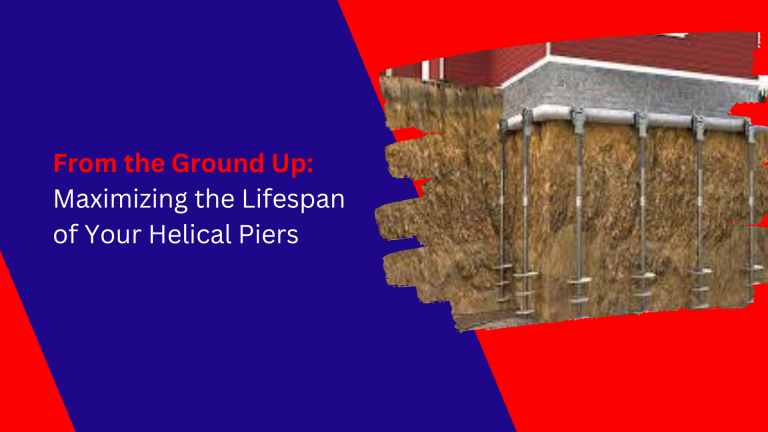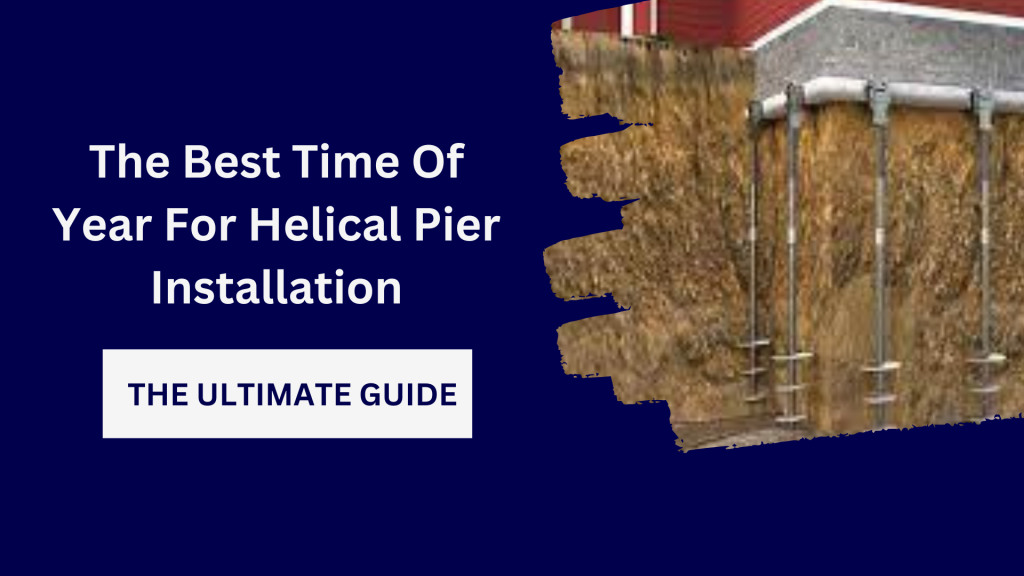
Are you considering installing helical piers for your construction project but unsure of the best time of year for helical pier installation? The truth is, the ideal time for helical pier installation depends on various factors, including weather conditions, soil moisture content, and ground conditions.
As a highly skilled assistant specializing in construction and engineering, I can confidently say that the best time for helical pier installation is during the dry season when the ground is firm and stable.
This is typically in the late summer or early fall when the soil moisture content is low, and the ground is less likely to shift or settle.
However, it’s essential to consult with a professional engineer or contractor who can evaluate the site’s specific conditions and recommend the best time for installation.
Keep reading to learn more about the factors that influence the ideal time for helical pier installation and how to ensure a successful installation for your construction project.
Factors Affecting the Best Time of Year for Helical Pier Installation
Several factors influence the best time of year for helical pier installation. Some of these factors include weather conditions, soil moisture content, and ground conditions. Here’s a closer look at each of these factors:
Weather Conditions
Weather conditions significantly impact the installation of helical piers. Extreme cold or hot temperatures and wet conditions can make the installation process challenging. During the winter, the installation process can be more challenging due to the freezing conditions. The frozen ground can make it difficult to install helical piers, and the equipment used may not work correctly. In contrast, during the summer, hot temperatures can cause the soil to expand and become too soft, making it difficult to install helical piers.
Soil Moisture Content
Soil moisture content is another critical factor to consider when determining the best time of year for helical pier installation. Installing helical piers on saturated soil can cause them to sink or settle, leading to structural issues. During the rainy season, the soil is typically wet, making it challenging to install helical piers. On the other hand, during the dry season, the soil is drier, making it easier to install the piers without worrying about the soil’s moisture content.
Ground Conditions
Ground conditions can also influence the ideal time for helical pier installation. If the soil is too soft or has too much clay, it can make it difficult to install helical piers. Additionally, if the ground is uneven or sloped, it can cause the helical piers to install unevenly, leading to structural issues. Therefore, it’s essential to evaluate the ground conditions to determine the best time to install helical piers.
Advantages of Installing Helical Piers During the Off-Season
There are several benefits to installing helical piers during the off-season, which is typically in late summer or early fall. Here are some of the advantages:
Reduced Costs
During the off-season, contractors may offer discounts or lower rates for their services. This is because they are less busy during this time, and they want to attract more business. Therefore, you can save on the installation costs by scheduling the installation during the off-season.
Faster Installation
During the off-season, contractors are less busy, which means they have more time to focus on your project. This can lead to faster installation times as the contractor can allocate more time and resources to your project.
Less Interruptions
During the off-season, there are typically fewer construction projects happening, which means there are fewer interruptions. This can help ensure that your project is completed on time, and there are no delays due to other construction projects.
Disadvantages of Installing Helical Piers During Peak Season
While there are advantages to installing helical piers during the off-season, there are also disadvantages to installing during peak season. Peak season is typically during the spring and summer months when the weather is warmer. Here are some of the disadvantages:
Higher Costs
During peak season, contractors are busier, which means they may charge higher rates for their services. Additionally, material costs may also be higher during peak season due to the high demand.
Longer Installation Times
During peak season, contractors are busier, which means they have less time to dedicate to your project. This can lead to longer installation times, which can delay your project’s completion.
More Interruptions
During peak season, there are typically more construction projects happening, which can lead to more interruptions. This can cause delays and may lead to additional costs.
Best Time of Year for Helical Pier Installation in Different Regions
The best time of year for helical pier installation varies depending on the region’s climate and weather conditions. Here’s a closer look at the best time of year for helical pier installation in different regions:
Northeast
In the Northeast, the ideal time for helical pier installation is during the late summer or early fall. This is when the weather is mild, and the soil moisture content is low, making it easier to install the piers.
Midwest
In the Midwest, the ideal time for helical pier installation is during the late summer or early fall. This is when the weather is mild, and the soil moisture content is low, making it easier to install the piers.
South
In the South, the ideal time for helical pier installation is during the fall or winter. This is when the weather is cooler, and the soil moisture content is lower, making it easier to install the piers.
West
In the West, the ideal time for helical pier installation is during the late summer or early fall. This is when the weather is mild, and the soil moisture content is low, making it easier to install the piers.
Preparing for Helical Pier Installation
Before installing helical piers, it’s essential to prepare the site to ensure a successful installation. Here are some of the steps you should take to prepare for helical pier installation:
Evaluate the Site
The first step in preparing for helical pier installation is to evaluate the site. This involves assessing the soil conditions, slope, and any potential obstructions that may impact the installation process.
Clear the Site
Before the installation process, it’s important to clear the site of any debris or obstacles that may interfere with the installation equipment.
Mark the Location of the Piers
Marking the location of the piers is essential to ensure accurate installation. This involves using spray paint or flags to mark the pier locations.
Schedule the Installation
Scheduling the installation with a professional contractor is essential to ensure that the installation is done correctly and on time.
Choosing the Right Contractor for Helical Pier Installation
Choosing the right contractor for helical pier installation is essential to ensure a successful installation. Here are some tips on how to choose the right contractor:
Look for Experience
When choosing a contractor, look for one who has experience in installing helical piers. This will ensure that they have the necessary skills and knowledge to complete the installation correctly.
Check for Licensing and Insurance
Make sure that the contractor you choose has the necessary licensing and insurance to perform the work. This will protect you in case of any accidents or damage to your property.
Look for References
Ask the contractor for references of previous clients they have worked with. This will allow you to get an idea of their work quality and professionalism.
Cost Considerations for Helical Pier Installation During Different Seasons
Costs for helical pier installation can vary depending on the season. Here are some cost considerations for helical pier installation during different seasons:
Off-Season
During the off-season, contractors may offer discounts or lower rates for their services. Additionally, material costs may also be lower during the off-season due to the lower demand.
Peak Season
During peak season, contractors may charge higher rates for their services due to the high demand. Additionally, material costs may also be higher during peak season due to the higher demand.
Common Mistakes to Avoid During Helical Pier Installation
During helical pier installation, there are some common mistakes that can lead to structural issues. Here are some mistakes to avoid during helical pier installation:
Incorrect Pier Placement
Incorrect pier placement can lead to structural issues. It’s essential to ensure that the piers are placed in the correct location to provide adequate support.
Incorrect Pier Depth
Incorrect pier depth can also lead to structural issues. It’s important to ensure that the piers are installed to the correct depth to provide adequate support.
Incorrect Installation Technique
Incorrect installation technique can lead to pier failure and structural issues. It’s essential to ensure that the installation is done correctly and according to the manufacturer’s guidelines.
Conclusion
The best time of year for helical pier installation depends on various factors, including weather conditions, soil moisture content, and ground conditions.
The ideal time for helical pier installation is during the dry season when the ground is firm and stable. This is typically in the late summer or early fall when the soil moisture content is low, and the ground is less likely to shift or settle.
However, it’s essential to consult with a professional engineer or contractor who can evaluate the site’s specific conditions and recommend the best time for installation.
By following the tips outlined in this article, you can ensure a successful helical pier installation for your construction project.

